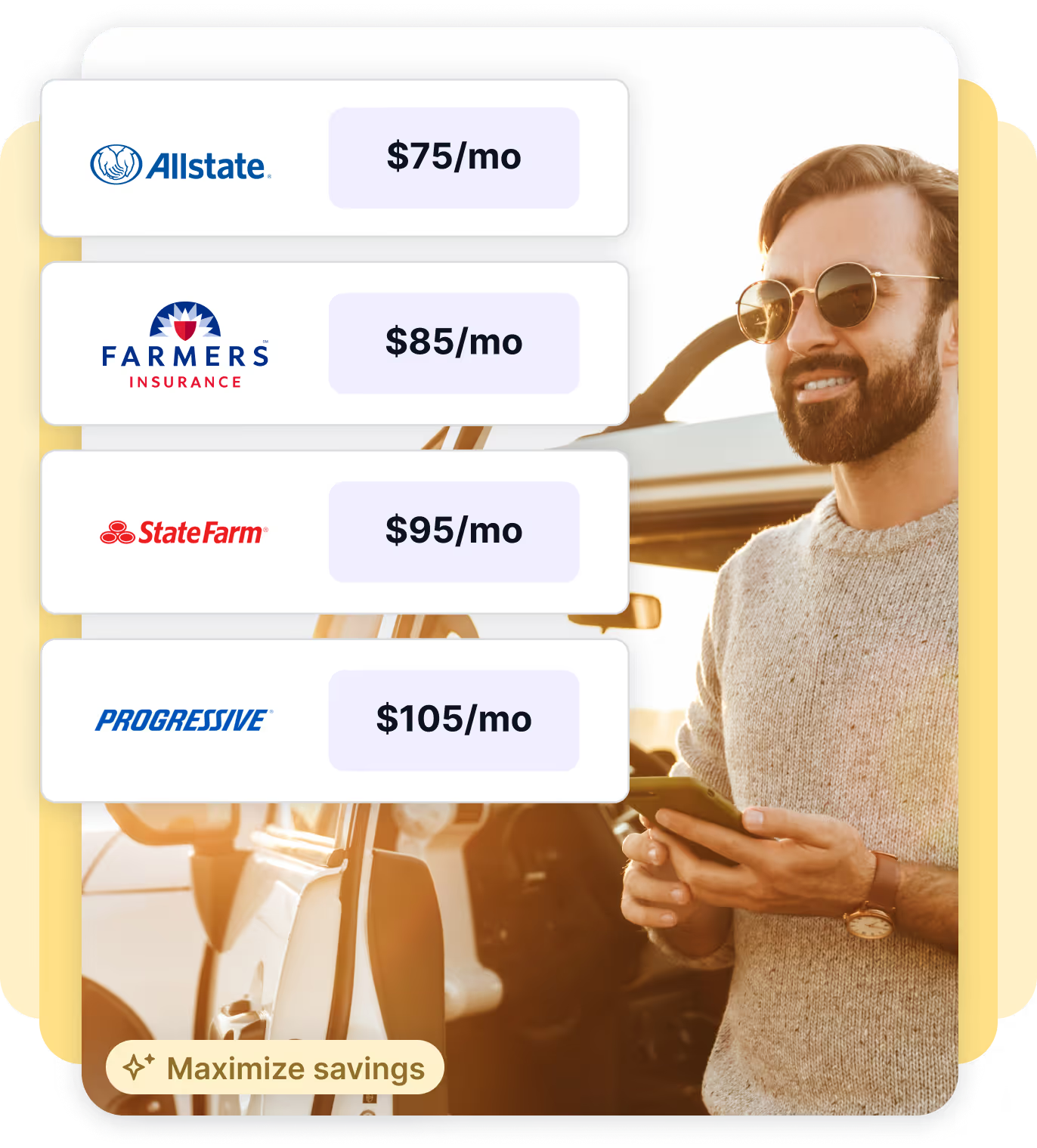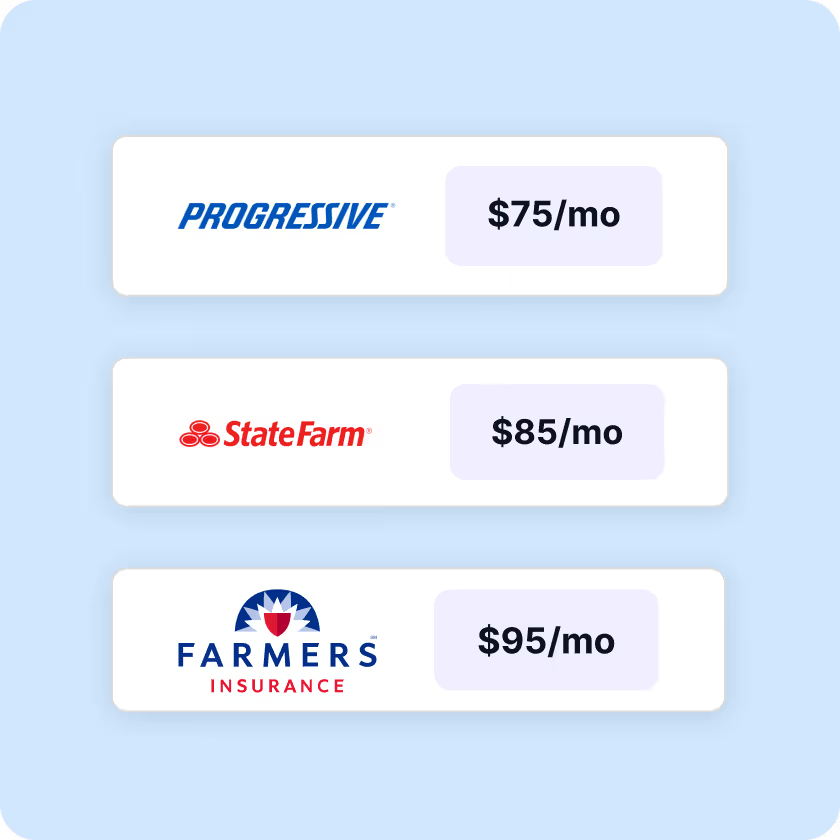
Kudos has partnered with CardRatings and Red Ventures for our coverage of credit card products. Kudos, CardRatings, and Red Ventures may receive a commission from card issuers. Kudos may receive commission from card issuers. Some of the card offers that appear on Kudos are from advertisers and may impact how and where card products appear on the site. Kudos tries to include as many card companies and offers as we are aware of, including offers from issuers that don't pay us, but we may not cover all card companies or all available card offers. You don't have to use our links, but we're grateful when you do!
Life Insurance 101: What It Is, How It Works, and Why You Need It
July 1, 2025


Life insurance can sound complicated, but it’s essentially a safety net for your family’s finances. This beginner’s guide will break down the basics – from what life insurance actually is to why it’s so important. We’ll also touch on the types of life insurance and how to get started.
By the end, you’ll understand how life insurance works and feel confident about taking the next step to protect your loved ones.
What is Life Insurance?
Life insurance is essentially a contract between you and an insurance company. In exchange for the premiums you pay, the insurer promises to pay a lump sum of money (a death benefit) to your chosen beneficiaries if you pass away while the policy is in force.
This money can provide crucial financial support to your family – helping replace your lost income, pay off debts, or cover expenses like funeral costs. Importantly, life insurance payouts are generally tax-free for your beneficiaries, meaning your loved ones get the full benefit amount without having to worry about income taxes on it.

How it works: You purchase a life insurance policy for a certain coverage amount (say $250,000 or $500,000). You name one or more beneficiaries (for example, your spouse or children) who would receive the money. As long as you pay your premiums on time (monthly or annually), the coverage remains active. If you were to die while the policy is active, the insurance company pays your beneficiaries the agreed-upon amount.
They can use this money for any needs – there are no restrictions on the payout’s use. If you have a term life policy and outlive the term (more on term vs. permanent shortly), the coverage simply ends with no payout (since its purpose is to insure against an early death). With a permanent life policy, coverage continues for life as long as premiums are paid.
Key terms to know:
- Premium – the payment you make to keep the insurance in force (e.g. your monthly payment).
- Beneficiary – the person(s) or entity (like a trust) you designate to receive the death benefit.
- Death benefit – the amount of money the insurer will pay out upon the insured’s death.
In short, life insurance provides a guaranteed financial payout to your loved ones at the worst of times. It offers peace of mind that if something happens to you, those who depend on you will be taken care of financially.
Types of Life Insurance: Term vs. Whole Life
Not all life insurance policies are the same. The two main types are term life insurance and whole life insurance (a common form of permanent life insurance).
Understanding the difference is a crucial “basic” of life insurance:
Term Life Insurance:
This type of policy covers you for a set term or period of time – for example, 10, 20, or 30 years. If you pass away during that term, your beneficiaries receive the death benefit. If you outlive the term, the coverage ends (though many policies offer an option to renew or convert). Term life is designed to cover temporary needs or the years when your death would have the greatest financial impact on your family (such as until the mortgage is paid off or kids are grown).
Cost: Term life insurance is generally much more affordable than whole life. For example, a healthy 30-year-old woman might pay around $187 per year for a $500,000, 20-year term policy, whereas a permanent policy for the same coverage could cost about $3,861 per year. Because of its lower cost, term life is the choice most families make to get sufficient coverage at a reasonable price.
Whole Life Insurance:
Whole life is a form of permanent insurance that covers you for your entire life (it does not expire as long as premiums are paid). It also includes a savings component called cash value that grows over time. Part of your premium goes into this cash value, which accumulates on a tax-deferred basis and can be borrowed against or withdrawn in certain situations. The policy’s death benefit is guaranteed for life.
Cost: Whole life insurance is much more expensive than term for the same amount of coverage because of the lifetime coverage and cash value feature. However, it can be useful for specific needs – for example, if you have a lifelong dependent (a special-needs child) or estate planning considerations, or if you want a policy that doubles as a conservative savings vehicle. For most people, though, the high cost means you might afford far less coverage with whole life than you could with a term policy.
In summary, term life insurance is cheaper and lasts for a set period, while whole life insurance costs more but lasts a lifetime. Many financial advisors recommend term life for most beginners because it offers a large safety net during the years you need it most, at a price you can fit in your budget. Permanent insurance (like whole life) can play a role in long-term financial plans for some, but it’s usually not the first type of policy to buy when you’re just starting out.
There are other varieties of permanent insurance, like universal life or variable life, but those are beyond the basics – they also provide lifelong coverage with some investment features. The fundamental choice for most consumers is term vs. whole life.
Why Do You Need Life Insurance?
If you have loved ones who rely on you financially, life insurance is a crucial safety net. Think about how your family would cope with expenses if your income suddenly disappeared. Unfortunately, this is a scenario many families face – and often they are unprepared.
In fact, only about 52% of Americans have any life insurance coverage, meaning nearly half have no protection at all. And even among those who do have coverage, many are underinsured. One study found over a third of people without adequate life insurance say the reason is they’re unsure how much or what type to get.
Here are some common reasons why life insurance is so important for those who need it:
Replace Lost Income:
If you contribute to your household income, think about how your family would replace that money. A life insurance payout can help your spouse pay the rent or mortgage, cover utilities and groceries, and maintain their standard of living when you’re no longer there to provide for them. Above all, life insurance is designed to replace your income for your dependents so they aren’t left financially stranded.
Pay Off Debts:
Many of us have debts that don’t disappear when we die – like a mortgage, car loans, or credit card debt. Life insurance can provide funds to pay off these balances, so your family isn’t stuck with them. For example, you might buy enough coverage to pay off the remaining mortgage on your house, ensuring your family can stay in the home debt-free.
Cover Funeral and Medical Costs:
Funeral and burial costs can easily run $10,000 or more, which can be a burden if money is tight. Medical bills or other end-of-life expenses might also crop up. A life insurance policy can at minimum cover these final expenses, so your loved ones don’t have to dig into savings or take on debt.
Fund Future Needs (Education/Retirement):
You might also want to provide a financial cushion for long-term goals, such as your children’s college education or your spouse’s retirement. A policy can be structured to help fund these future needs if you’re not around to contribute directly.
Essentially, life insurance keeps those “what if” fears in check – what if I died tomorrow? For a relatively low cost, you transfer that financial risk to an insurance company. As a result, your family gets a lump sum that can make an enormous difference during a very difficult time.
Consider that about 30% of U.S. households would face financial hardship within just one month if the primary wage earner died unexpectedly. Life insurance is there to prevent that kind of immediate crisis and provide longer-term security.
You might wonder, “Do I really need life insurance if I’m young or single?” If no one depends on your income – for example, you’re single with no children – you may not need much (or any) life insurance yet. However, if you have even small obligations or you want to lock in low rates while you’re young, a modest policy can still be useful (for instance, to cover funeral costs or pay off any private student loans or debts a cosigner might otherwise be stuck with).
Generally, the priority for life insurance increases once you have a spouse/partner, children, or others who rely on you financially. It’s at that point that life insurance becomes an essential part of a sound financial plan
How to Get Started with Life Insurance
Getting life insurance might seem intimidating, but it’s a straightforward process. Here are the basic steps to get started:
1. Figure Out How Much Coverage You Need
First, determine the appropriate coverage amount (death benefit) for your situation. A common rule of thumb is to get coverage roughly 10–12 times your annual income as a starting point. For example, if you earn $50,000 a year, you might aim for a $500,000–$600,000 policy.
However, everyone’s needs differ – consider factors like your debts, mortgage, number of children, and how many years of income replacement your family would require. It’s better to err on the side of a little extra coverage if you can afford it, because the goal is to ensure your loved ones have enough financial support.
(Remember, 21% of life insurance owners say they don’t have enough coverage, so do the math carefully.)
2. Choose the Right Type of Policy
Decide between term or permanent life insurance based on your needs and budget. For most beginners, a term life policy is the most affordable and sensible option to start with. Pick a term length that covers the years your family is most financially vulnerable – for instance, a 20-year term to cover your kids’ growing-up years, or a 30-year term to cover your mortgage and until your retirement. If you think you’ll need lifelong coverage (or have a specific reason for permanent insurance), you can explore whole life or other permanent policies, but be prepared for higher premiums.
(Tip: Many term policies have a convertibility feature, allowing you to convert to a permanent policy later without a new medical exam, which can be a good backup option.)
3. Shop Around for Quotes
Life insurance prices (premiums) can vary by insurer, so it pays to compare quotes. You can use online comparison tools or work with an independent insurance broker who can get quotes from multiple companies. Make sure to compare policies with the same coverage amount and term. Look at reputable, financially strong insurers (check ratings like A.M. Best to ensure the company will be there for the long haul).
4. Complete an Application
Once you choose a policy, you’ll need to fill out an application. This will involve providing detailed information about your health, lifestyle, and possibly your finances. Be honest – insurers use this info (and possibly a brief medical exam) to evaluate your risk and set your premium.
Many life insurance applications require a medical exam for higher coverage amounts, where a nurse checks your blood pressure, weight, takes blood/urine samples, etc. There are also no-exam life insurance options if you prefer to skip the exam, but those typically cost more and may limit the coverage amount.
5. Policy Approval and Payment
After the application and underwriting process, the insurer will either approve you at a certain rate, offer you a modified policy, or (less commonly) deny coverage. Once approved, you’ll sign the policy documents and pay your first premium.
Congratulations – your life insurance is now in force! Keep up with your premium payments (many people set them on auto-pay) so the policy remains active. It’s a good idea to inform your beneficiaries about the policy and keep the documents in a safe place.
Cost tip: Life insurance might be more affordable than you think. For a healthy 30-year-old, a $500,000 term policy can cost under $20 a month, which is a small price for the protection it provides.
Many people overestimate the cost of life insurance and delay buying it, but rates are generally reasonable, especially if you purchase when you’re younger and healthier.
Maximize Your Insurance Savings with Kudos
While you’re securing your family’s future with life insurance, it’s also a great time to make sure you’re saving money on your other insurance needs – like auto insurance. Kudos simplifies comparing auto insurance rates, quickly finding the best rate tailored for you. It’s easy and completely free.
With Kudos, you can instantly check quotes from multiple car insurance companies to ensure you’re not overpaying. Saving on your car insurance means more room in your budget for other priorities (like life insurance coverage) without sacrificing quality protection. It’s a smart way to make sure all your insurance bases are covered affordably.
Give Kudos a try – it takes just a few minutes, and you could unlock significant savings on your auto policy.
Frequently Asked Questions
Do I need life insurance if I’m young and single?
If you’re young and no one depends on you financially, you might not need a large life insurance policy yet. However, you may still consider a small policy to cover things like personal debt or funeral costs so they don’t fall on your family. The biggest reason to buy life insurance when you’re young is to lock in a low rate for the future. Life insurance premiums increase with age, so buying a policy now (even if it’s modest) can save you money long-term.
Is the life insurance I have through work enough?
Many employers offer a basic group life insurance benefit, often equal to 1x or 2x your annual salary. While that’s a nice perk, it’s usually not enough to fully protect your loved ones. It’s wise to treat employer-provided life insurance as a supplement and get your own individual policy for the full amount you need. An individual policy is portable (you keep it no matter where you work) and you can choose the coverage amount that truly protects your family
Are life insurance payouts taxable?
In most cases, no, your beneficiaries will not have to pay income tax on the life insurance death benefit they receive. Life insurance payouts are almost always tax-free for the beneficiary. The main exceptions would be if the proceeds go into your estate due to no living beneficiary (which could have estate tax implications for very large estates), or if you had a policy with cash value and it was cashed out for more than the amount of premiums paid (any gains could be taxed).
What’s the difference between term and whole life insurance?
Term life insurance covers you for a set period (the term) and is designed purely to provide a death benefit if you die during that time. Whole life insurance covers you for your entire life and includes a savings component (cash value) that grows over time.
How can I lower the cost of life insurance?
If you’re concerned about affordability, here are a few tips: 1) Buy sooner rather than later – the younger and healthier you are, the lower your premiums (rates lock in once you purchase, so don’t put it off). 2) Opt for term life insurance – as discussed, term is a better value than whole life for most people. 3) Maintain a healthy lifestyle – insurers often check factors like your weight, blood pressure, cholesterol, and whether you smoke. Being in good health and tobacco-free can dramatically reduce your rate. 4) Shop around – different insurers have different pricing models, so compare multiple quotes. And 5) Choose an appropriate coverage amount and term length (don’t buy more insurance than you actually need; a 20-year term might be sufficient instead of 30, depending on your situation).
By understanding these life insurance basics, you’re taking an important step toward securing your family’s financial future. Life insurance doesn’t have to be intimidating – with a little homework (and the right policy in hand), you’ll gain peace of mind knowing your loved ones are protected no matter what.

Supercharge Your Credit Cards
Experience smarter spending with Kudos and unlock more from your credit cards. Earn $20.00 when you sign up for Kudos with "GET20" and make an eligible Kudos Boost purchase.
Editorial Disclosure: Opinions expressed here are those of Kudos alone, not those of any bank, credit card issuer, hotel, airline, or other entity. This content has not been reviewed, approved or otherwise endorsed by any of the entities included within the post.





























.webp)
.webp)
.webp)
%20(1).webp)
.webp)
.webp)


.webp)